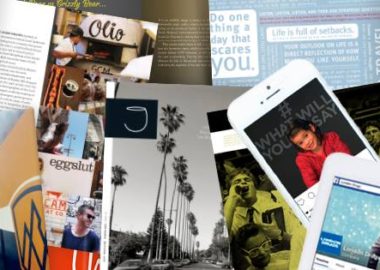The history of marketing contains many examples of brand stories. Consider this ad from 1984; it is perhaps a quintessential example of brand storytelling.
Apple’s 1984 Superbowl spot was greeted by criticism that “it wasn’t about Apple”. However, it marked the beginning of Apple’s brand narrative as being a tribe of disruptors, innovators and free-thinkers.
I’ve always believed that one of the reasons why Apple has been so successful in its advertising campaigns is that Apple knows exactly what story they want to tell. Their advertising can hit many different beats but always tells the same story. You can draw a clear line from the “1984” ad to Justin Long’s Mac guy ads even though the ads are very different creatively. They participate in the same narrative.
As platform-agnostic content creators, we’re always inspired when we see new and innovative examples of brand stories. Here are three of our favourites.
The Madden GIFerator
Inspired by the wildly successful Madden NFL game, EA invited football fans to create GIFs in their Madden GIFerator, a microsite stocked with social sharing potential. The content remained deeply aligned with the Madden brand story of being all about hardcore NFL fandom by leveraging shareable content to allow fans to talk smack, react to real-time game events and elevate the fan experience online. It also deeply linked the Madden gaming experience with contemporary online sports reporting, which heavily uses memes and GIFs.
Glamour Magazines Video Shorts
Coke’s Name Game
One of the bigger campaigns of last year was Share a Coke, a bottle personalization initiative taken by Coca-Cola. A key component of Coke’s much-heralded Content 2020 strategy is Coke’s desire to generate brand stories that provoke conversations; they also want to move from telling Coca-Cola stories to telling the stories of their consumers. Coke also wants to make their story dynamic and engaging. The Share A Coke campaign was directly tied to this objective. What to do with a successful campaign? Make it bigger.
Coke made it bigger by starting the #TweetMyName project. Users tweet Coke with their name and the hashtag. Coke then puts their name up on a Times Square billboard, along with fun facts about their name (mine? Janes choose running as their favourite form of exercise). A digital camera captures the name in lights and tweets it to the user (where you better believe it gets retweeted).
Examples of brand stories can come in many shapes and sizes. Storytelling for brands is most powerful when it aligns with their brand purpose and builds the idea of what the brand wants to be. When you see the original “1984” ad from Apple, you realize that their brand story has stayed constant and is deeply connected with their corporate culture. How are you making your marketing tell your consumers who you are?
Working on becoming a social media ninja? We got you. Learn how to organize a winning social strategy, how to tell stories on social media or how to reuse content for big results.








